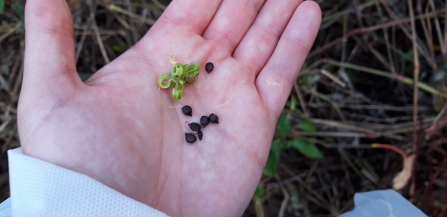
© NWWT
Before: Make sure it hasn’t gone to seed. Pulling at this point will only help spread seeds further.
©GBNNSS

© NWWT
Before: Make sure it hasn’t gone to seed. Pulling at this point will only help spread seeds further.
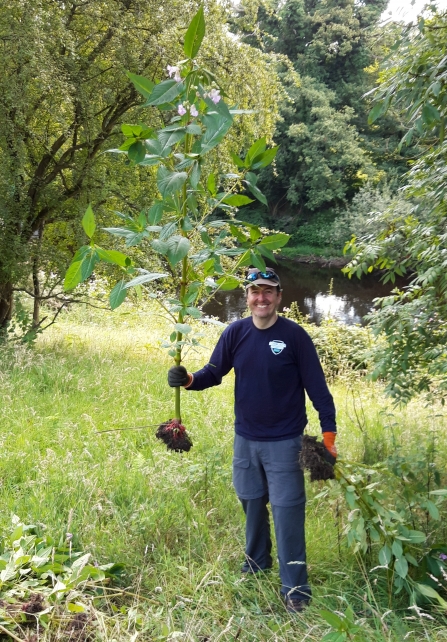
© NWWT
Pull the roots out of the ground by holding the stem as close to the ground as possible so it doesn’t snap. A Himalayan balsam plant can regrow if the roots are still in the ground!
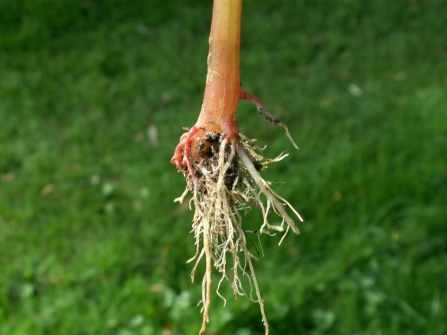
© RPS Group Plc
Snap the stem as close to the root as possible, making sure it’s below the first node (knee like joints where the leaves grow out of).
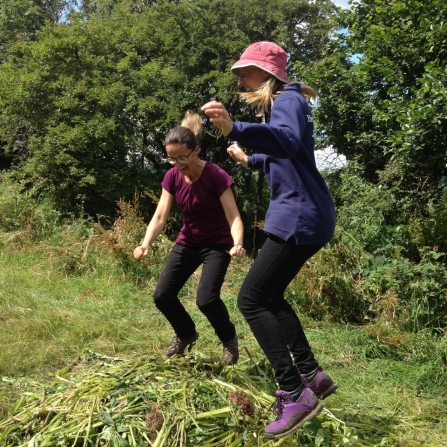
© Lesley James
Once the plant has been snapped, place them in a pile and leave them to rot.
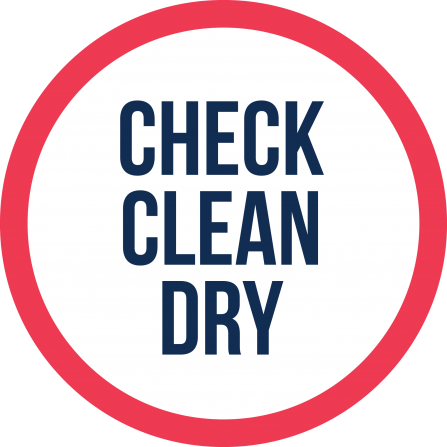
After: Make sure if you are walking anywhere where there are invasive non-native species you are checking your shoes, clothing and equipment for any plant parts, cleaning everything down before you go home, and drying everything out before using it again.
Want to do more? The Wales Resilient Ecological Network Project is always looking for volunteers to assist our dedicated team. For more information, visit
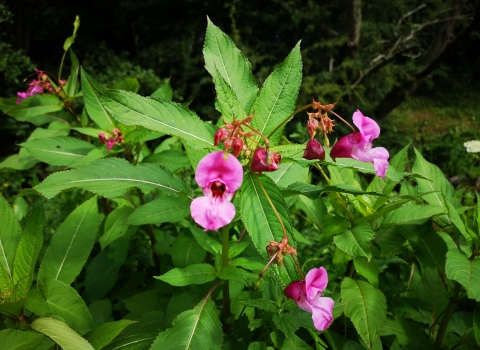
© NWWT